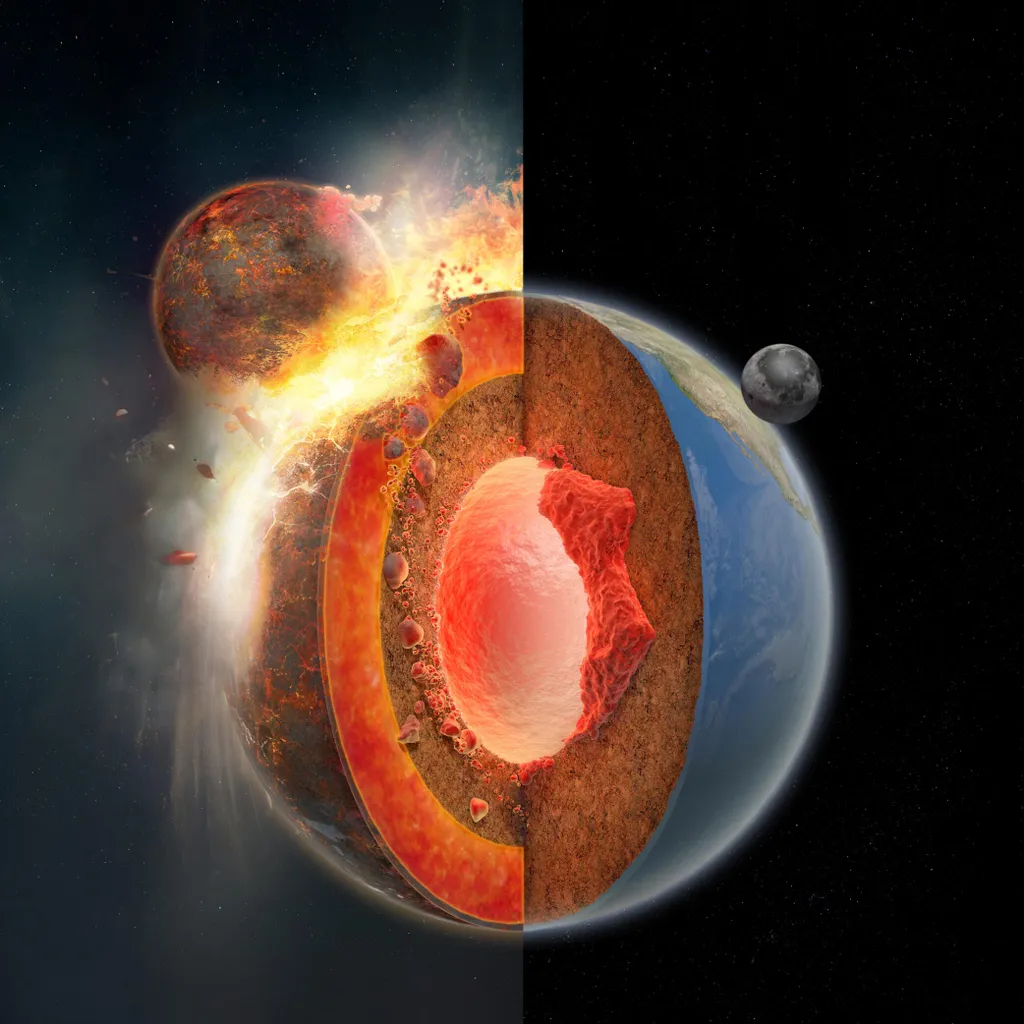Around 4.5 billion years ago, a massive collision with another planet changed Earth forever. Now, scientists have discovered that extra-terrestrial debris is still lodged inside our world.
For years, scientists have puzzled over anomalous seismic activity deep under the Earth’s crust. There are two places where seismic activity has a mysteriously low velocity: one beneath the African tectonic plate, and the other under the Pacific tectonic plate.
This activity impacts tectonic plate structures – and therefore changes everything from the formation of mountains to the joining and splitting of supercontinents.
The new study, published in Nature, details how scientists at the California Institute of Technology, USA, and Shanghai Astronomical Observatory, China, ran computer simulations to solve this puzzle. These calculations involved high-resolution impact simulations, mantle convection models, mineral physics calculations, and seismic imaging.
The scientists discovered that the material in these two low-velocity areas is 2-3.5 per cent denser than material in the surrounding mantle.

It’s these pieces of material, tens of kilometres big, that they think are relics of an ancient protoplanet (a large body of matter orbiting around the Sun or a star developing into a planet) known as Theia, now buried and preserved under the Earth’s crust. The alien protoplanet was Mars-sized when it crashed into proto-Earth, known as Gaia.
The study found that Theia’s shards actually form two per cent of the Earth’s mass. The scientists think the alien material is so dense because it is enriched with iron – just like Moon rocks.
In fact, many scientists already believe that the Moon was formed by this collision with Theia. Earlier simulations suggested that the Moon was likely formed by the protoplanet’s debris – making the composition of the Moon mostly alien material.
These same simulations suggested that Earth was only lightly contaminated with pieces of Theia, given that little direct evidence of Theia exists.
But the new study challenges this idea – showing instead that the impacts on Earth were significant.
“The Moon-forming giant impact”, said one of the paper’s authors Professor Deng Hongping, instead “marks the starting point for the Earth’s geological evolution over the course of 4.5 billion years.”
Because they are so dense, the shards of Theia likely sunk towards the Earth’s core and melted into dense blobs. This sinking created the low-velocity areas that have helped to form the Earth as we know it.
The findings could help us learn more about the formation of the Earth, Moon and exoplanets beyond our solar system.
Read more:




